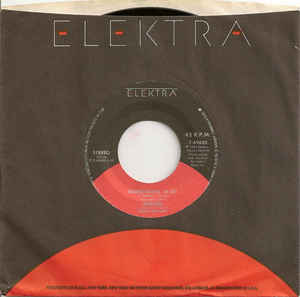A-side grieves, B-side slays. - 90%
The famed campy, mascara filled image of Dokken was on full display throughout the mid-80s, culminating in a series of solid songs that are often disowned by the greater metal community because of the image that went with it. Influences from older bands that are still held in higher regard such as Black Sabbath, Judas Priest, and somewhat less aggressive members of the NWOBHM and the early German metal scene were essentially lost in translation amidst all of the media obsession with how bands presented themselves visually. It could be said that a visually driven society is a rung down the ladder from one that is driven by the printed page, and the same can be said as well for music that concerns itself with image and not the song itself, and that is precisely what ended up happening to metal in the later 80s, and what has continued since MTV became the gold standard for musical viability.
Dokken’s famed power ballad “Alone Again” is not a very visually driven song unless you look at it through the lens of the cliché arena rock music video that it came with. A quick look at the principle acoustic guitar line reveals something not all that far off from classic Black Sabbath ballads such as “Sleeping Village” and “Planet Caravan”, albeit put in with that really large sounding 80s drum production and a voice that is the mirror opposite of Ozzy Osbourne’s aggressive bellows. Combining Don Dokken’s light flowing, clean cut tenor voice with a set of really catchy power chord lines and a really syllabic guitar solo that can basically be hummed along with by an audience, what emerges during the louder portions of the song bears a good deal of similarity to Boston and some other AOR bands from the late 70s.
The b-side “Tooth And Nail” see a very different picture emerging from a band that is supposedly all glam and no rock. Although this definitely doesn’t qualify as the heaviest and most brutal fit of speed metal to come out of 1984, it is loaded with Judas Priest and Accept references, as well as a hint of the sort of neo-classicism that Yngwie was also starting to push via his solo work at around this time. Sure, Don Dokken’s vocal delivery doesn’t fall into the same league as Udo’s AC/DC-like screams, Halford’s banshee wails, or Jeff Scott Soto’s gravely, attitude based singing. The solo that Lynch rips out of those strings essentially schools Eddie Van Halen on how epic of a solo you can cram into a sub-4 minute song if you lay off of the stupid quiet sections with David Lee Roth doing some goofy spoken ad lib. He throws just about every trick he has in the book into this solo, yet is also able to come up with something much more memorable than what Jake E. Lee did on “Bark At The Moon”.
This is one of those common instances where a b-side essentially outclasses the a-side, but retains its status as such because it’s not as accessible to casual, mainstream consumption. It showcases the band in their most youthful and hungry state, ready to take on the world with a sound that is tame enough for a lot of non-metal fans, but maintains enough of the essentials to keep from falling into Winger territory. Perhaps that’s a bit ironic considering that this band later took on said band’s guitar player on their late 90s comeback album “Erase The Slate”, but there is a definite distinction between a glam band with a metal oriented guitar player and a metal band, and it all comes down to how much emphasis is placed on aggression and intricacy of songwriting, and in this respect Dokken edges into the latter category.

